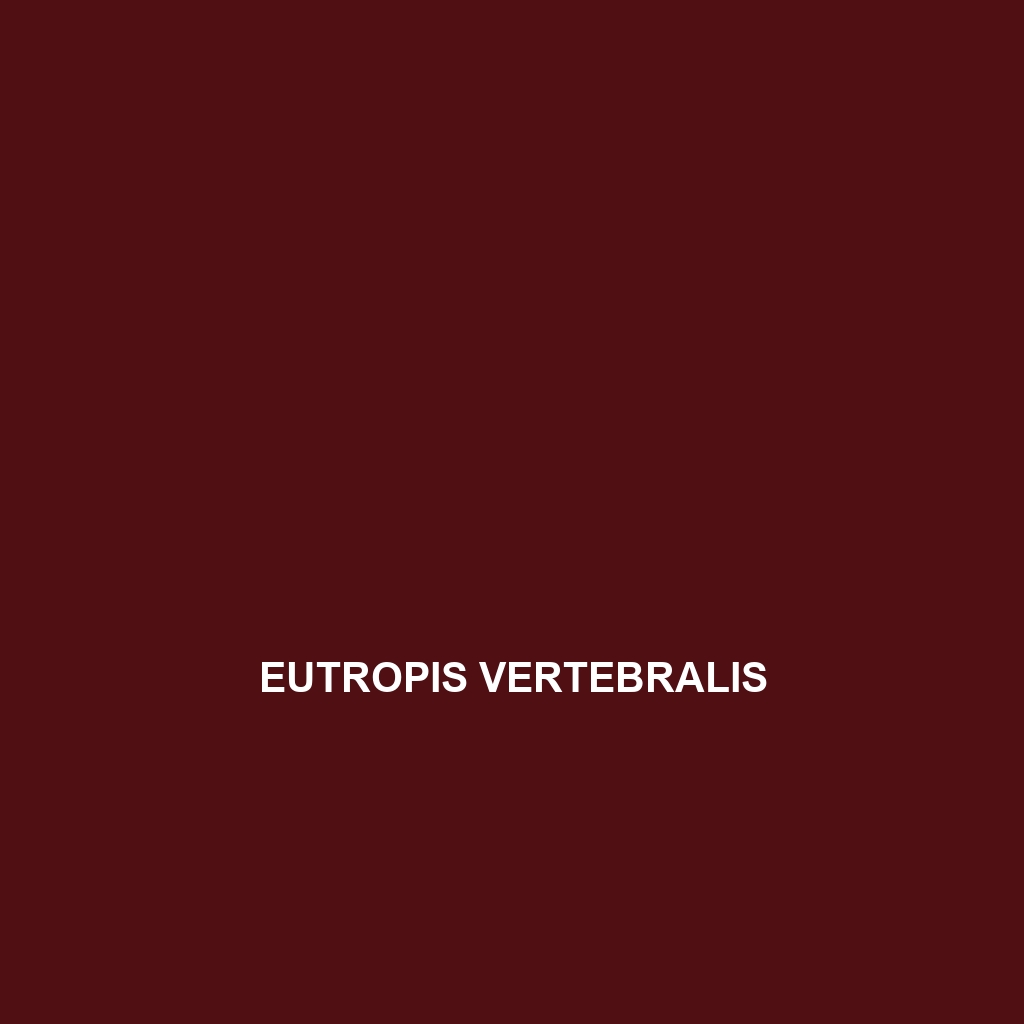Common Name
Eutropis vertebralis
Scientific Name
Eutropis vertebralis
Habitat
The Eutropis vertebralis, commonly known as the common skink, primarily resides in tropical and subtropical habitats. This species is frequently found in regions such as Southeast Asia, particularly across the lush jungle landscapes of Malaysia, Indonesia, and southern Thailand. It thrives in various environments, including rainforests, savannas, and areas adjacent to marine habitats. Eutropis vertebralis is often spotted in leaf litter, under rocks, or amidst dense vegetation where the humidity levels are ideal for its survival. These habitats provide essential cover and resources, promoting a healthy population of skinks. The moderate to high temperatures in these regions, with consistent rainfall, create optimal living conditions for the species.
Physical Characteristics
Eutropis vertebralis exhibits distinctive physical traits that set it apart from other lizard species. Adult individuals typically reach a length of 10 to 15 centimeters. Notably, they possess a streamlined body that aids in quick movement through dense undergrowth. The coloration ranges from a brownish hue to dark olive green, often featuring faint stripes or spots that allow them to blend seamlessly into their environment, providing effective camouflage against predators. One of the unique features of this species is its smooth, shiny scales, which not only enhance its appearance but also help in moisture retention. Its limbs are short but strong, adapted for burrowing and navigating through foliage.
Behavior
The common skink is predominantly diurnal, displaying active behaviors in the daytime. They exhibit a range of social interactions, often seen basking in the sun or engaging in territorial displays against other skinks. Eutropis vertebralis is known for its agility and swift movements, making it adept at escaping predators. Interestingly, this species demonstrates unique mating rituals during the breeding season, where males perform displays to attract females. Additionally, they have a notable habit of retreating to their burrows or crevices at the slightest sign of danger, showcasing their instinctual survival strategies. Such behaviors are intriguing for those interested in reptilian social dynamics and predator evasion tactics.
Diet
Eutropis vertebralis is classified as an insectivore, primarily feeding on various invertebrates. Its diet consists mainly of ants, termites, and other small insects, making it a significant player in controlling pest populations within their habitats. The skink employs a foraging strategy where it relies on its keen eyesight to spot prey, using its quick reflexes to snatch food with its agile tongue. This diet not only provides essential nutrients but also plays a crucial role in maintaining ecological balance. By preying on pests, it indirectly contributes to the health of the vegetation in its environment, showcasing its importance in the food web.
Reproduction
The reproductive cycle of Eutropis vertebralis is fascinating, with breeding typically occurring during the warm, humid months of the year. Males engage in spirited courtship displays to attract females, often involving head bobbing and tail movements. After mating, females lay clutches of eggs, usually ranging from 5 to 12 eggs, which are hidden in warm, moist soil or under leaf litter. The incubation period lasts around 6 to 8 weeks, after which the hatchlings emerge, fully independent and ready to begin their own lives. Parent skinks exhibit little to no parental care, allowing the young to fend for themselves immediately after birth, which is characteristic of many skink species.
Conservation Status
According to the International Union for Conservation of Nature (IUCN), Eutropis vertebralis is currently classified as a species of least concern, indicating stable population numbers. However, habitat destruction due to urban expansion and agriculture poses potential threats to its natural habitats. Conservation efforts focus on protecting its environments, including rainforests and savannas, to ensure the species continues to thrive. It is essential to raise awareness about the ecological significance of this species and the necessity of preserving its habitat to avoid future vulnerabilities.
Interesting Facts
One fascinating aspect of Eutropis vertebralis is its ability to regenerate its tail after losing it—a common defense mechanism in many lizards. This ability not only aids in escape from predators but also serves as a means for the skink to survive and continue its crucial ecological role. Additionally, their impressive speed and agility make them an interesting subject for researchers studying reptilian adaptations. These skinks are also known for displaying a range of vocalizations during mating rituals, further exemplifying their complex behaviors.
